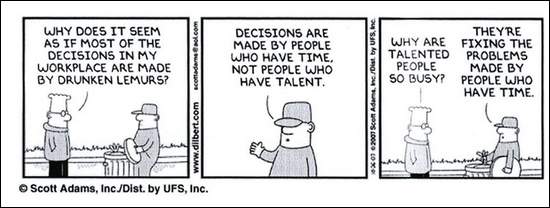Hasta la vista
Very recently, Virgin Airways, successfully completed a two-week on-field trial of Google Glass. If you are a first class passenger in Virgin, you’d be warmly received by a “glass-ed” hostess who’d literally know all about you, even pre-empt and address those considerations that could make your travel experience truly memorable. Business analysts tout this as the next big thing in customer relationship management. Futuristic technologies are rapidly making inroads into the way business processes are managed and executed, promising to improve them over time. These promises are grounded on validations which unmistakably and unequivocally serve as proofs-of-concept that data and efficiency are the only true measures of business success in the coming times.
The Google Glass example seeds the thought that there is no end in sight on the overlay of analytic strata that one can introduce to improve transactions. At present, an HR manager already has several tools at her/his disposal to make deep analytic conclusions about individuals and the workforce. Data on an employee’s web behavior can provide invaluable insights about several talent metrics, such as engagement, productivity, and integrity. Imagine pivoting this information with organisational events or stages of employment to arrive at conclusions about the employee’s time of quitting. Adding another layer, if this information could be mapped to the internal and external talent database of the organisation to find the best replacement. An HR manager of the future could be talking about metrics on the lines of “potential replacements for probable departures.”
One cannot help but draw parallels of the future talent manager with the “T 800” cyborg played by Arnold Schwarzenegger in the Terminator movies. At several points, the movies provide glimpses of the cyborg’s view of ambient human presence— a piercing peek into a cold alternate reality. The image of a “glass-ed” HR manager looking at an employee as a set of data points suddenly appears like a distinct possibility. Many skeptics predict that the disciple of HR management will face an imminent but slow death in the future. The foundations of HR are not rooted as much in the execution of processes as they are in the fundamentals of good relationships. For good or for the worse, HR technologies are looking to shake this very foundation of HR. While this may mean efficient administration, robust business preparedness, and precision execution, it does raise questions on what it means for the deeper and often unpredictable fundamentals of human behavior— a layer that any analytic model cannot possibly hope to penetrate— of unpredictability, intuition, and impulse— of emotion. Until human emotion continues to hold the embargo rights in business decisions, organisations and employees can take comfort in the fact that HR and talent management systems will continue to have the enviable capability to self-correct. Until the time man and machine cohabit, the possibilities of the future not only sound aspirational— they sound exciting. It is important to know and prepare for these exciting opportunities that the future of HR technology presents.

